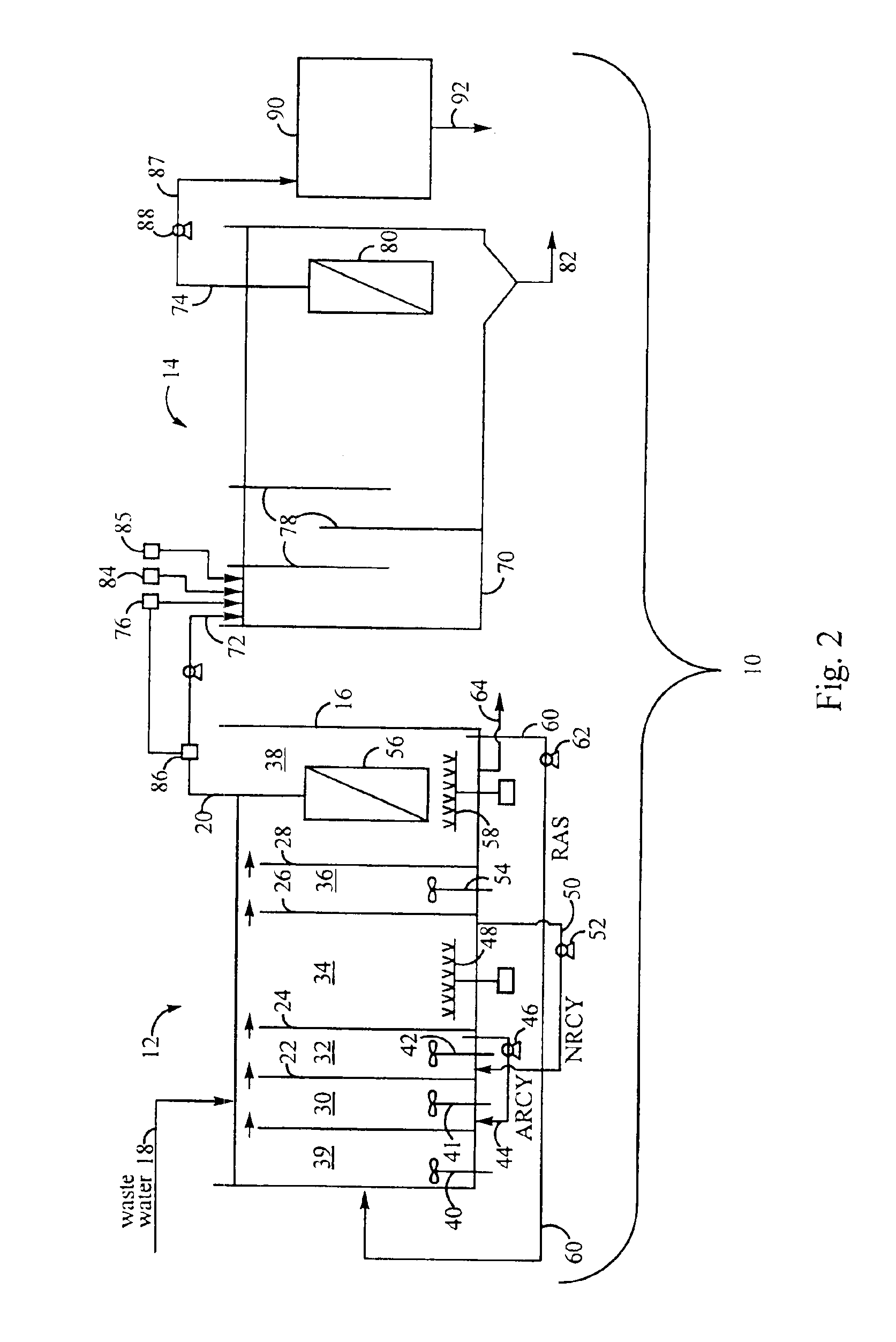Method and apparatus for treating wastewater using membrane filters
a technology of membrane filters and activated sludge, which is applied in the direction of multi-stage water/sewage treatment, other chemical processes, separation processes, etc., can solve the problems that the treatment process using conventional granular-activated carbon filters does not provide this flexibility, and achieves the reduction of volume requirements for the activated sludge treatment process and the effect of reducing the volume requirements
- Summary
- Abstract
- Description
- Claims
- Application Information
AI Technical Summary
Benefits of technology
Problems solved by technology
Method used
Image
Examples
Embodiment Construction
The apparatus for treatment of wastewater using membrane filters 10 consists of two principal components, a membrane filter bioreactor 12 and a powdered activated carbon (“PAC”) membrane filter reactor 14. In the preferred embodiment the membrane filter bioreactor 12 and the PAC membrane filter reactor 14 are deployed in series as illustrated in FIG. 1. However, there are applications where the membrane filter bioreactor 12 of the present invention will provide adequate treatment of the wastewater, in which case the membrane filter bioreactor can be utilized without the PAC membrane filter reactor 14.
The membrane filter bioreactor 12 consists of a bioreactor vessel 16 having a wastewater inlet 18 and a treated water outlet 20. A number of weirs 22, 24, 26, 28 divide the bioreactor vessel 16 into a number of treatment zones. While the preferred embodiment contemplates a single bioreactor vessel 16 divided into treatment zones by the weirs 22, 24, 26, 28, those skilled in the art will...
PUM
| Property | Measurement | Unit |
|---|---|---|
| concentration | aaaaa | aaaaa |
| concentration | aaaaa | aaaaa |
| volume | aaaaa | aaaaa |
Abstract
Description
Claims
Application Information
 Login to View More
Login to View More - R&D
- Intellectual Property
- Life Sciences
- Materials
- Tech Scout
- Unparalleled Data Quality
- Higher Quality Content
- 60% Fewer Hallucinations
Browse by: Latest US Patents, China's latest patents, Technical Efficacy Thesaurus, Application Domain, Technology Topic, Popular Technical Reports.
© 2025 PatSnap. All rights reserved.Legal|Privacy policy|Modern Slavery Act Transparency Statement|Sitemap|About US| Contact US: help@patsnap.com



